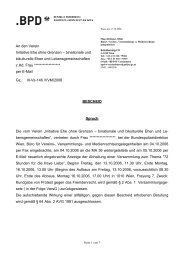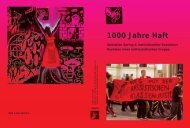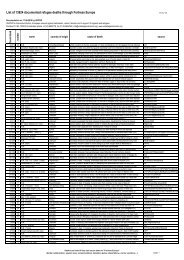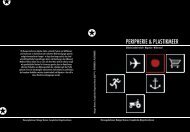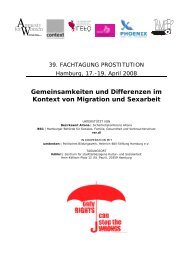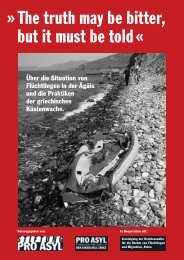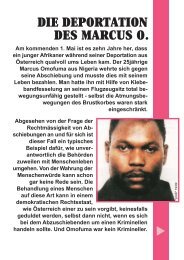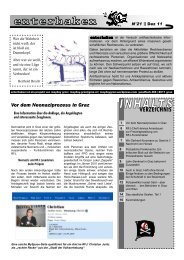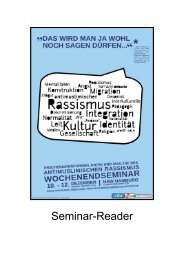Turin's CIE - International University College of Turin
Turin's CIE - International University College of Turin
Turin's CIE - International University College of Turin
You also want an ePaper? Increase the reach of your titles
YUMPU automatically turns print PDFs into web optimized ePapers that Google loves.
consequence <strong>of</strong> EU Directive 2008/115/EC, which states that the maximum period for preremoval<br />
detention in the European Union is eighteen months.<br />
2. CONTEXTUALISING DAY-TO-DAY ISSUES<br />
A year and a half is an extremely long time for a person to live in detention due to the<br />
administrative procedure <strong>of</strong> identification and expulsion:<br />
“The worst problem is having to stay here for seven or eight months because after one or<br />
two months here it becomes really like a detention for criminal matters. Almost like a<br />
kidnapping. We are now talking about staying for nine or ten months and you never know<br />
if things are going to change. The fear that we will have is to wait for one and a half years,<br />
and in that case it would really be detention for criminal matters. This is kidnapping <strong>of</strong> a<br />
person, because we did not commit a crime. We are here against our will” (Interview 20).<br />
Moreover, the day-to-day conditions <strong>of</strong> detention can raise questions about whether human<br />
dignity and other fundamental rights are being ensured, especially if the <strong>CIE</strong> is not able to cope<br />
with its purpose 60 , or if the administration is not able to create decent and non-degrading<br />
conditions within the <strong>CIE</strong>.<br />
The day-to-day issues in <strong>Turin</strong>’s <strong>CIE</strong> could become a matter <strong>of</strong> real concern. During our research<br />
we have faced several problems that were expressed by detainees, lawyers, religious personnel<br />
and other pr<strong>of</strong>essionals. We conducted interviews with detainees from different sections <strong>of</strong> the<br />
<strong>CIE</strong> and in some <strong>of</strong> the sections certain day-to-day issues listed below appear to be worse than<br />
in other sections. Furthermore, day-to-day issues are <strong>of</strong>ten overlapping and they need to be<br />
understood in the context <strong>of</strong> a detainee who lives for months in a cell with up to six other people<br />
who they did not previously know, and with very little personal autonomy to make the everyday<br />
decisions that most <strong>of</strong> us take for granted.<br />
3. SPACE<br />
“This is a big cage that we cannot get out <strong>of</strong>.”<br />
- Interview 21<br />
It is arguable whether there is enough space inside <strong>Turin</strong>’s <strong>CIE</strong>. There was a difference in how<br />
the interviewed detainees perceived the space that they live in, in comparison to how other<br />
interviewees who are not detained tended to judge the situation:<br />
“<strong>Turin</strong>’s <strong>CIE</strong> consists <strong>of</strong> seven areas, named with different colours: the Green Area is the<br />
female area, then there is the Blue Area, the Yellow Area, the Red Area, the White Area, and<br />
so on. Between the areas there is a corridor. In each area there are five sleeping quarters.<br />
In each room there are six beds - true beds, not cement beds [and] quite <strong>of</strong>ten there are<br />
bunk beds. At the end <strong>of</strong> the room there is a toilet, a shower and a basin. There is no<br />
cupboard. Inside each room there is heating and air conditioning, if they are working.<br />
Inside each area, opposite to the rooms there is another building: the refectory. Here there<br />
are tables and benches, but in many areas they have been destroyed by the detainees<br />
Law Decree 89/2011, “Urgent provisions to complete the implementation <strong>of</strong> EU Directive 2004/38/EC on free<br />
movement <strong>of</strong> EU citizens and the transposition <strong>of</strong> Directive 2008/115/EC on the removal <strong>of</strong> irregular third<br />
country nationals” (GU n. 144 <strong>of</strong> 23-6-2011).<br />
60 See Part D. Other Matters, Chapter XIII. Figures and Costs.<br />
36 | P a g e




